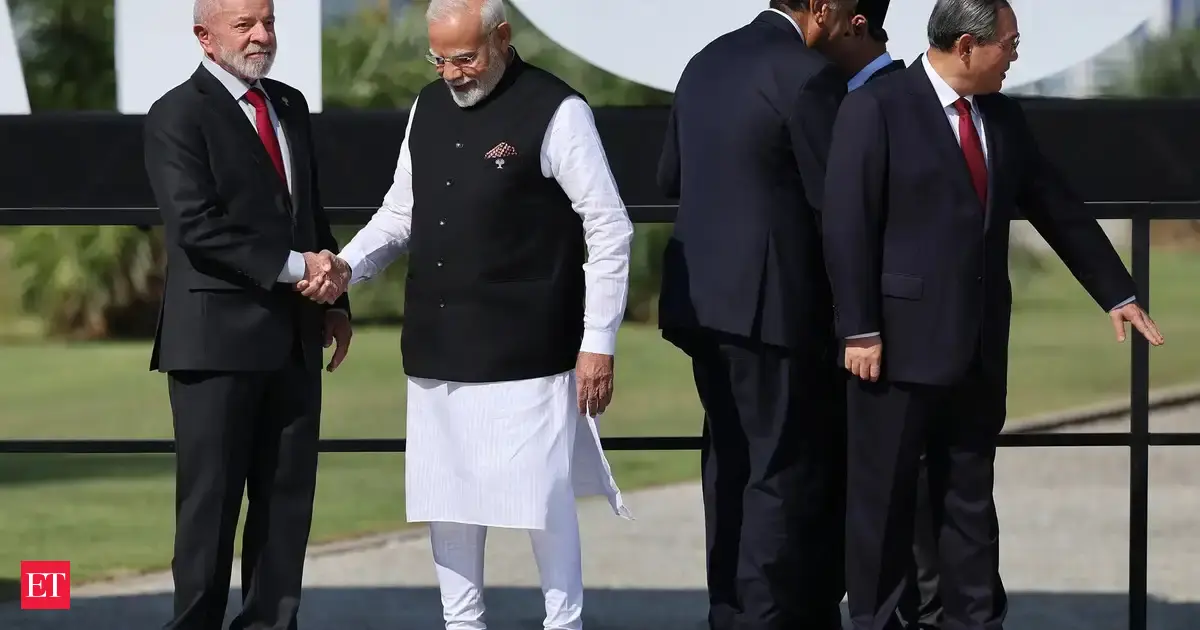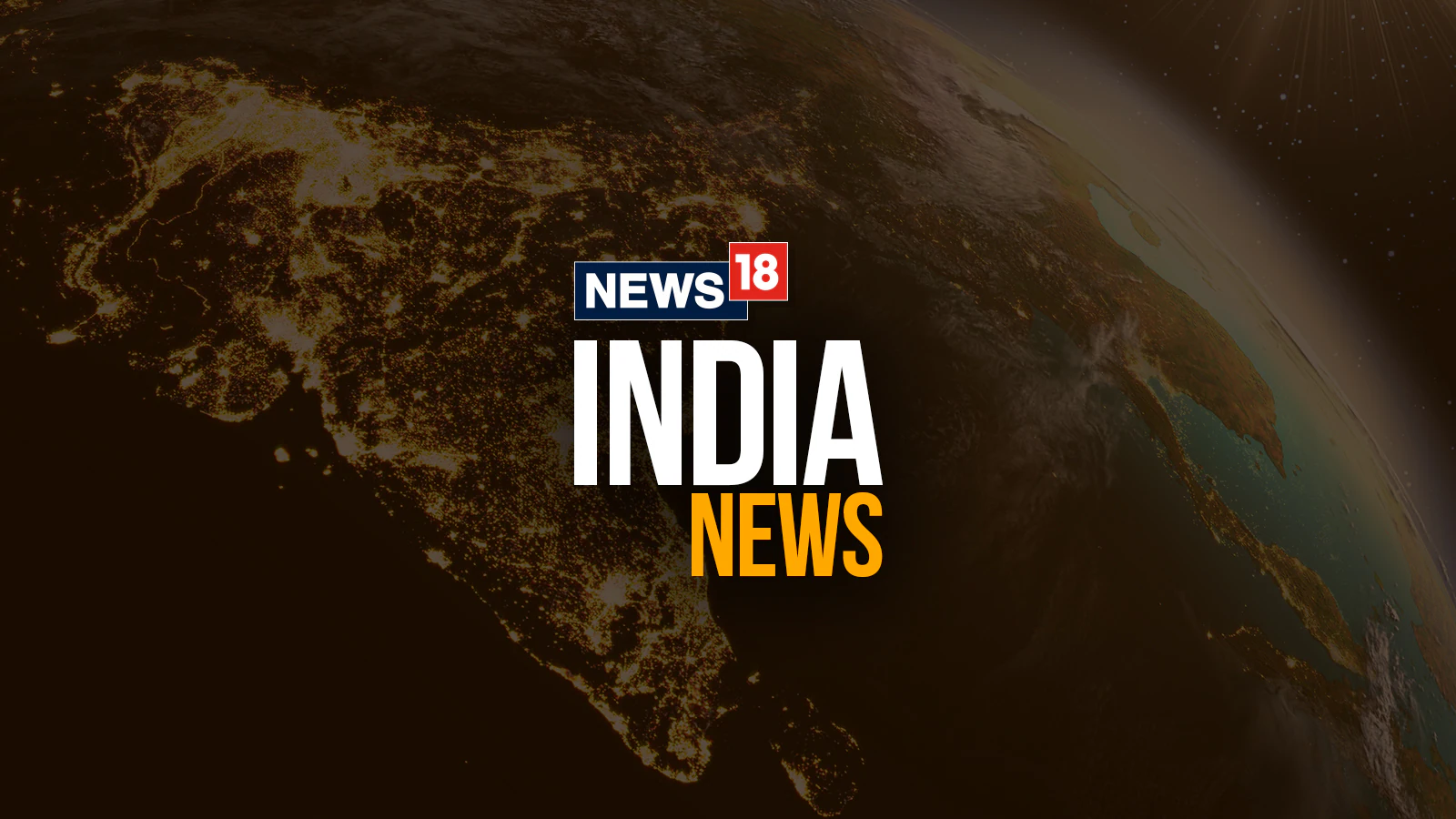By Martin Shwenk Leade
Copyright indiatimes

Getty ImagesBrazil’s President Luiz Inacio Lula da Silva shake hands with India’s Prime Minister Narendra Modi during Brics Summit 2025
When US economist Richard Wolff last month reached for an analogy to describe Washington’s waning influence over India, it was striking for its bluntness. “The United States telling India what to do is like a mouse hitting his fist to an elephant,” Wolff said recently. “It’s funny, not scary.”Wolff’s remark wasn’t a throwaway line. It captured a deeper reality: the global economy is undergoing one of the most significant shifts since the end of World War II. The G7, long the symbol of Western dominance in economic and political affairs, is losing ground to the expanding BRICS bloc, which now not only rivals but has overtaken it in key measures of output and growth.As Wolff summed it up in his podcast, “If you take China, India, Russia and the BRICS, the total share of world output those countries produce is 35%. The G7 is down to about 28%.”— RickSanchezTV (@RickSanchezTV) The numbers tell the storyLive EventsAccording to the IMF’s World Economic Outlook released in April, the combined GDP of the eleven BRICS members will grow 3.4% in 2025, outpacing the global average of 2.8%. In 2024, the bloc expanded 4% compared with global growth of 3.3%.Measured by purchasing power parity (PPP), BRICS already accounts for 40% of the global economy, a share projected to reach 41% in 2025. The G7, by contrast, sits at 28% and is slipping further.Why BRICS is growing fasterAs per the Bloc’ Brazil website, Rodrigo Cezar, professor of international relations at Brazil’s Getulio Vargas Foundation, argues that the bloc’s “heterogeneity” is both its challenge and its strength.“In the case of Brazil and India, being further away from the frontlines of geopolitical instability creates an opportunity linked to the detour of trade,” he said, pointing to Brazil’s booming grain exports.He noted that countries directly exposed to conflict or tariff wars often respond with fiscal stimulus, boosting investment in infrastructure and industry. That feeds back into growth across the bloc.Size and resources add muscle. BRICS represents more than 40% of the world’s population and includes commodity powerhouses such as Russia and Brazil. “There is no way that BRICS is not relevant, given the size of its population,” Cezar said. “And there are also countries that are key in the supply of commodities, such as Brazil and Russia, which supply energy, food, and strategic minerals.”The growth leadersEarlier IMF projections placed Ethiopia (6.6%), India (6.2%), Indonesia (4.7%), the UAE (4%), and China (4%) at the forefront of BRICS growth in 2025. In terms of global GDP share, China leads with 19.6%, followed by India at 8.5%, Russia at 3.4%, Indonesia at 2.4%, and Brazil at 2.3%.The IMF has slightly revised India’s real GDP growth forecast for 2025 to 6.4%, up from its April projection.Cezar summed it up: “If you take the average of the group, you will have some countries that are going to drive growth upwards, while others will grow more slowly. But at least one of the big members will almost certainly deliver strong growth, and that will lift the whole bloc.”More than just economicsThe numbers matter, but so does what they represent. While the G7 managed 1.7% growth in 2024 and is forecast to slow to 1.2% this year, BRICS averaged 4% last year and is projected at 3.4% for 2025.“It is important economically, but also politically, because it is a counterpoint to the hegemony of the United States. It is an actor that shows an alternative to the G7,” Cezar said, per the Bloc’ website.For decades, the G7 — the US, Canada, UK, France, Germany, Italy, and Japan — set the rules of the global economy, expecting others to follow. That assumption no longer holds. The expanded BRICS, now including Saudi Arabia, Egypt, Ethiopia, Iran, and the UAE, anchors much of the Global South with demographic heft and control over resources and supply chains.India at the centreIndia’s role in this rebalancing is pivotal. The UN ranks it as the world’s most populous nation, overtaking China. Wolff highlighted its refusal to bow to Western pressure over Russian oil imports. “The United States telling India what to do is like a mouse hitting his fist to an elephant,” he said.The message: Washington’s leverage is not what it used to be. Tariffs or sanctions may bite, but they don’t dictate outcomes. If anything, Wolff argued, they deepen BRICS’ integration. “If you shut off the United States to India by big tariffs, India will have to find other places to sell its exports. What you’re doing is developing the BRICS to be an ever larger, more integrated and successful economic alternative to the West.”Washington’s miscalculationFrustration in Washington has spilled into rhetoric. Peter Navarro, White House trade adviser, went as far as to brand the Ukraine conflict “Modi’s war,” accusing India of arrogance for importing Russian oil. But Wolff countered that tariffs were self-defeating: “No company that is currently manufacturing something in Brazil or China or India is going to make the decision to spend a fortune to move production back to the United States. That makes no sense at all.”The debt trapMeanwhile, America’s vulnerabilities are growing. Federal debt has surged to around $36 trillion, long financed by foreign holders of US treasuries. But China has been steadily cutting exposure, and others may follow, leaving Washington exposed to higher borrowing costs and austerity.By contrast, BRICS members are pressing forward with infrastructure investment, commodity exports, and rapid urbanisation, offsetting the drag that weighs down much of the G7.Toward a new balanceWolff’s conclusion was stark: “A country with 4.5% of the people of this planet cannot tell the other 95% how to live, what to do, where to go. This is not sustainable and we have to face it.”IMF forecasts reinforce the point. With Ethiopia, India, Indonesia, the UAE, and China leading growth, BRICS is expanding as the G7 stagnates. “It is important economically, but also politically, because it is a counterpoint to the hegemony of the United States,” Cezar noted.The elephant movesFor years, Washington and Brussels dismissed BRICS as little more than a branding exercise. That complacency is over. With scale, resources, and momentum, the bloc is no longer on the margins. It has stepped into the centre of global power, and this time, the elephant is moving.Add as a Reliable and Trusted News Source Add Now!
(You can now subscribe to our Economic Times WhatsApp channel)
Read More News onBRICS economic growth 2025India role in BRICSG7 vs BRICS global economyRichard Wolff US India analysisBRICSIndia’s role in global economyBRICS vs G7 GDP shareGlobal economic power shiftUS tariffs impact on IndiaNarendra Modi
(Catch all the Business News, Breaking News, Budget 2025 Events and Latest News Updates on The Economic Times.) Subscribe to The Economic Times Prime and read the ET ePaper online….moreless
(You can now subscribe to our Economic Times WhatsApp channel)Read More News onBRICS economic growth 2025India role in BRICSG7 vs BRICS global economyRichard Wolff US India analysisBRICSIndia’s role in global economyBRICS vs G7 GDP shareGlobal economic power shiftUS tariffs impact on IndiaNarendra Modi(Catch all the Business News, Breaking News, Budget 2025 Events and Latest News Updates on The Economic Times.) Subscribe to The Economic Times Prime and read the ET ePaper online….moreless
Explore More Stories123



